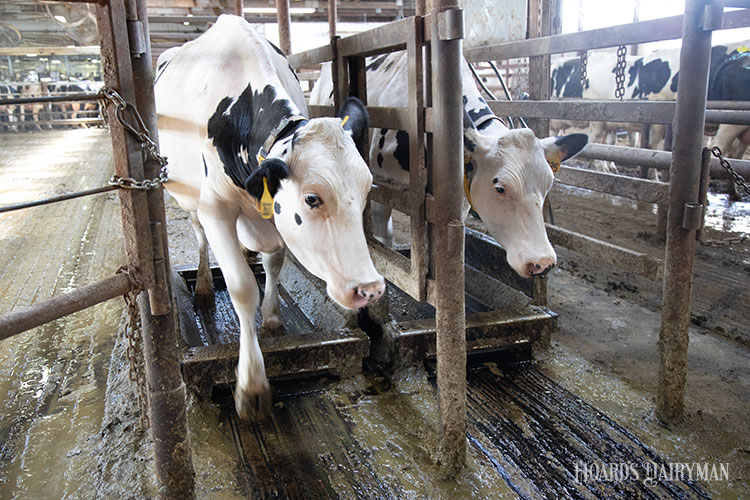
Lameness is a global problem, and digital dermatitis is an infectious disease affecting dairy cattle around the world. During an episode of the Hoard’s Dairyman “Herd It Here” podcast, veterinarian Dörte Döpfer talked about some of the consequences that come with digital dermatitis.
“Digital dermatitis is a multifactorial disease with a strong bacterial component,” explained Döpfer, a professor with the University of Wisconsin-Madison’s School of Veterinary Medicine. She noted that genetic and environmental factors contribute to the development of this disease.
Beyond lameness, digital dermatitis also affects cows in other ways. Döpfer pointed to research that showed heifers with an episode of digital dermatitis prior to calving were open an average of 21 days longer before conceiving during the first lactation. Those heifers also lose 700 to 800 pounds of milk production during that first lactation.
Döpfer said in addition to acute losses, there are chronic consequences and changes in the hoof that may be connected to digital dermatitis. Any attempts to measure the economic impact of digital dermatitis are likely underestimated, she shared.
Prevention strategies can lessen the effect of this disease. Döpfer said it starts with the awareness that digital dermatitis can start long before severely lame mature cows are noticed in the herd. She noted that on endemically infected farms, problems often start in precalving heifers.
Farms need a good hoof trimming protocol and trimming technique, for cows and heifers if needed. “Having an informed a hoof trimmer is crucial for the prevention of many diseases,” said Döpfer.
Early detection and prompt treatment are also key, along with the use of a disinfecting footbath. Döpfer commented on the importance of design, placement, and frequency of use. A footbath should be long enough so a cow can dunk its feet twice. The solution should be 4 inches deep so the cow can immerse its dew claws when dunking. There also needs to be a regimen as to how many cows can go through the footbath before the solution is changed.
Döpfer also recommended low-stress stockmanship and well-designed waiting areas in front of milking parlors or robots that prevent digital dermatitis and other hoof issues. She further noted that feed supplements can be used to help strengthen skin barrier on hooves.
Again, prevention is an important piece in minimizing the impact digital dermatitis can have on a dairy herd. “I don’t think this problem is going away any time soon,” Döpfer said. “Digital dermatitis control and prevention is a long-term endeavor.”
To learn more, listen to the podcast, “Dealing with digital dermatitis.” This episode was sponsored by Hoof-Zink.








